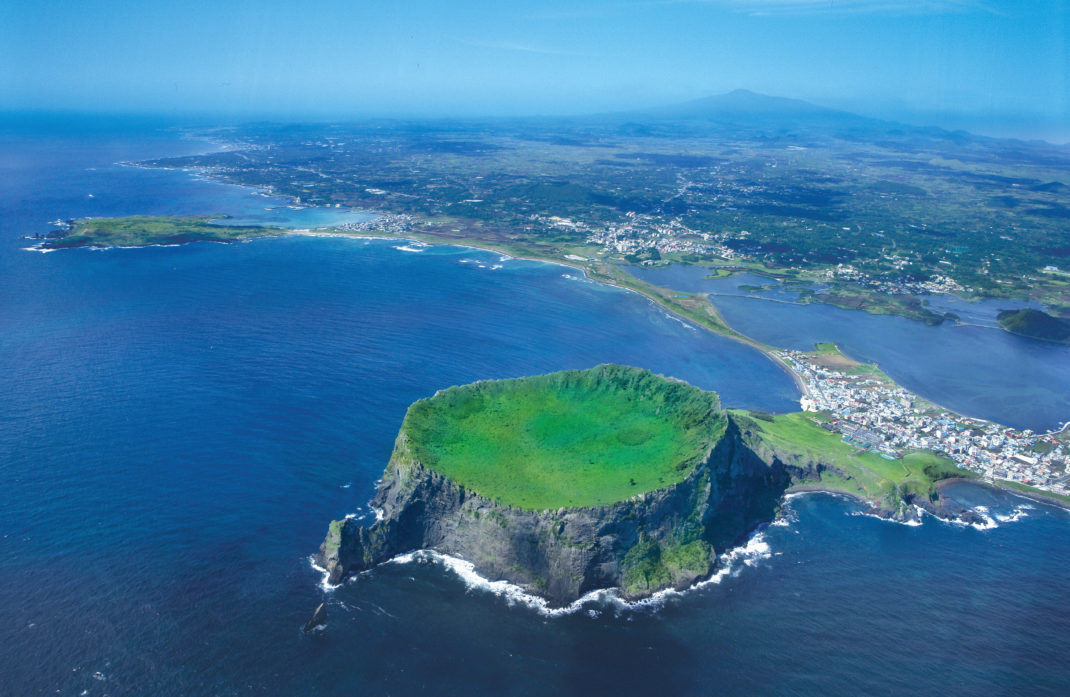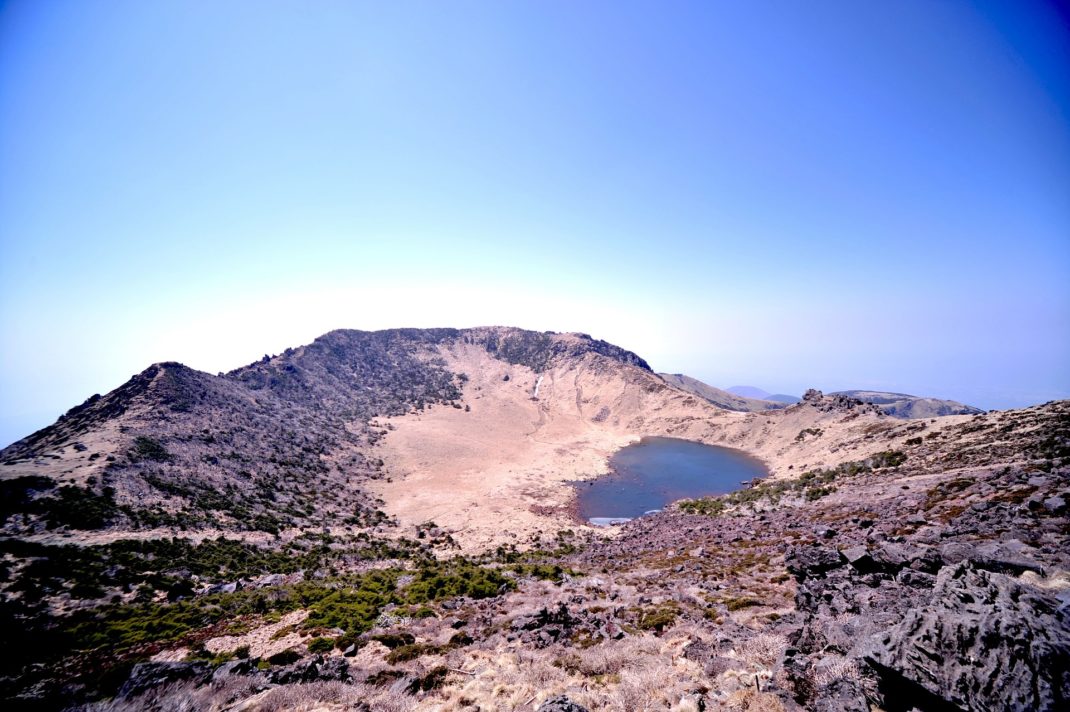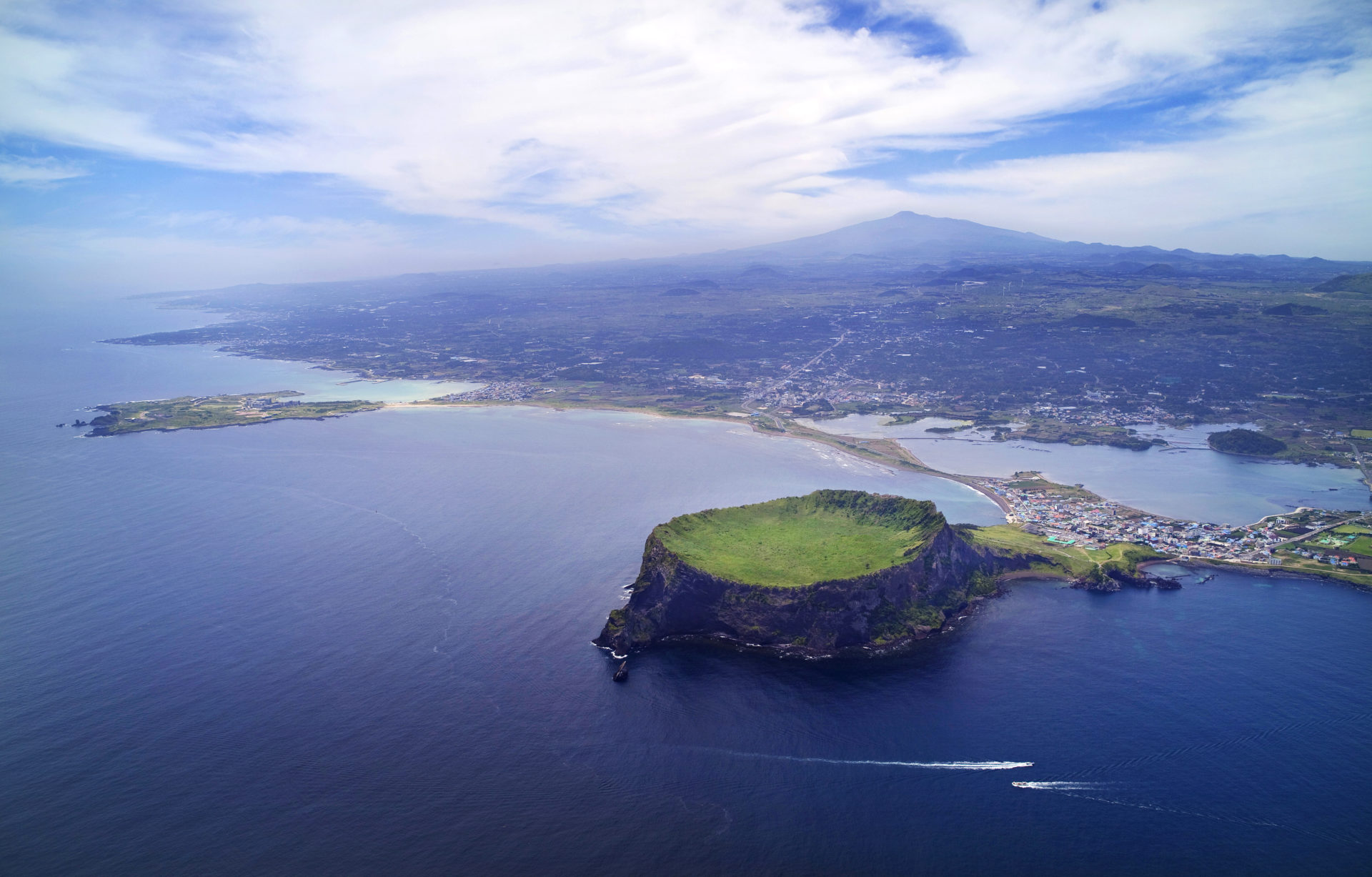One of the New 7 Wonders of Nature
Jeju Island
Jeju Province, South Korea
Jejudo (also known as Jeju Island) is a volcanic island. With a surface area of 1,846 sqkm it is the largest island 130 km off the coast of the Korean Peninsula, and the main island of Jeju Province of South Korea. The island lies in the Korea Strait, southwest of South Jeolla Province. The island contains the natural World Heritage Site Jeju Volcanic Island and Lava Tubes. A central feature of Jeju is Hallasan, the tallest mountain in South Korea and a dormant volcano, which rises 1,950 m above sea level. 360 satellite volcanoes are around the main volcano.
The island was created entirely from volcanic eruptions approximately 2 million years ago, during the time period extending from the Tertiary to the beginning of the Quaternary period, and consists chiefly of basalt and lava. The eruptions took place in the Cenozoic era. It has a humid subtropical climate, warmer than that of the rest of Korea, with four distinct weather seasons. Winters are cool and dry while summers are hot, humid, and sometimes rainy.[:es]La isla de Jeju, conocida antiguamente en Occidente como isla de Quelpart, es una isla volcánica, dominada por el monte Halla, un volcán de 1.950 metros de altura, el pico más alto de Corea del Sur.
La isla se formó hace cientos de millones de años, como consecuencia de erupciones volcánicas, y se compone fundamentalmente de basalto y de lava. Tiene un clima subtropical, más cálido que el del resto del país, en el que se distinguen cuatro estaciones; parte del verano es lluviosa, y el invierno es muy seco.
Fue una de las 28 finalistas para ser considerada una de las siete maravillas naturales del mundo.[:fr]L’île de Jeju est située à 85 km de la péninsule coréenne dont elle est séparée par le détroit de Jeju, et elle est la seule région subtropicale du pays. Le volcan Hallasan, point culminant de la Corée du Sud, s’élève à 1 950 mètres. L’éruption du Hallasan, aujourd’hui éteint, est à l’origine de la formation de l’île.[:de]Jejudo (koreanisch: 제주도) ist eine Vulkaninsel und die mit Abstand größte Insel Südkoreas. Sie bildet zusammen mit einigen kleineren Inseln um sie herum die Provinz Jeju-do (제주도).
Die Hauptstadt der Provinz ist Jeju-si im Norden der Insel. Die Insel selbst liegt in der Koreastraße, südwestlich von Jeollanam-do. Die Provinz umfasst auch 26 kleine Inseln, die in der Nähe der Hauptinsel liegen.
Obwohl die Insel strategisch günstig liegt, waren die Häfen bislang nicht ausgebaut. Dies lag an den flachen Stränden mit Unterwassersteinen, welche für die Schifffahrt gefährlich sind. Der wichtigste Hafen der Insel liegt in der Stadt Jeju-si im Norden. Seit 2011 ist jedoch die Marinebasis Gangjeongin Bau.
Die Koreaner sind stolz auf die Insel Jeju, betrachten sie doch die Insel als ein Juwel. Die subtropische Insel zieht viele nationale Touristen an und ist besonders beliebt als Ziel für Hochzeitsreisen (siehe auch Love Land). Besucher der südkoreanischen Ferieninsel werden am Meer gelegentlich von einem Pfeifton überrascht, der dem Pfeifen einer Lokomotive in der Ferne ähnlich tönt. Es handelt sich dabei um den sogenannten Sumbisori, den die Haenyeo ausstoßen, wenn sie aus dem Meer auftauchen und die vor dem Abtauchen eingeatmete Luft auspusten. Haenyeo („Meerfrauen“) werden die fast sechstausend Inselbewohnerinnen genannt, die heute noch auf Jeju dem traditionellen Gewerbe des Tauchens nach Meeresfrüchten nachgehen. Sie holen Algen, Schnecken, Muscheln und andere Schalentiere sowie Seeigel und Seegurken vom Meeresboden. Dazu tauchen sie ohne Atemgerät, nur mit einem Neoprenanzug, Tauchmaske und Flossen, bis zu 20 Meter tief.
Die Insel Jeju gilt den Koreanern als geheimnisumwitterte, mythische Insel. Bis vor etwa 100 Jahren war das 85 Kilometer südlich des koreanischen Festlands gelegene Eiland weitgehend von der Außenwelt abgeschnitten. Den wichtigsten Kontakt nach außen stellten Verbannte dar, die vor allem aus politischen Gründen nach Jeju abgeschoben worden waren. Die traditionellen Schamanen-Religionen haben sich bis heute auf der Insel erhalten. Immer noch sollen hier rund 18.000 verschiedene Gottheiten angebetet werden.
Das subtropische Klima macht Jeju auch für die koreanische Landwirtschaft bedeutsam. Besonders Orangen, Pilze und Tee werden exportiert. Der Tourismus entwickelt sich seit den 1970er Jahren und wird zunehmend zur Haupteinnahmequelle.




07-80

07-73
